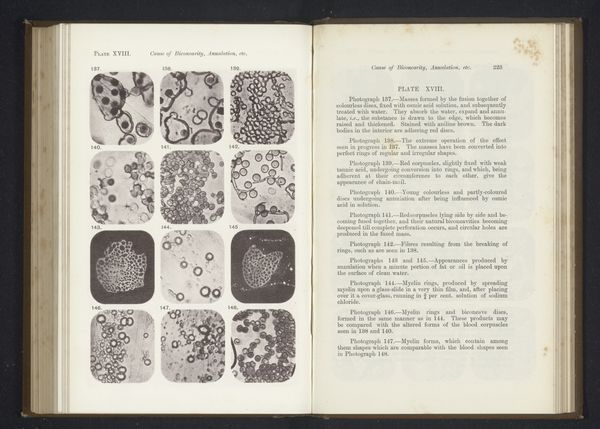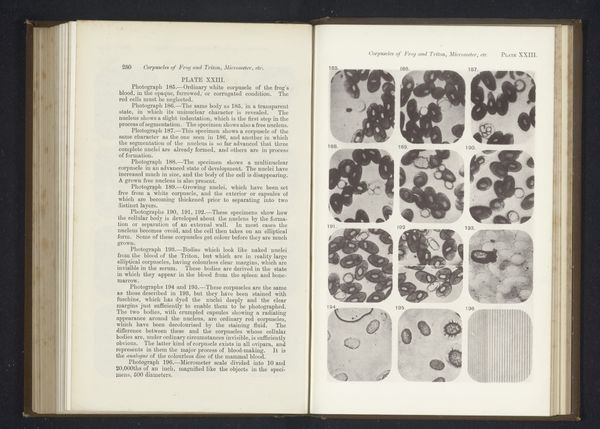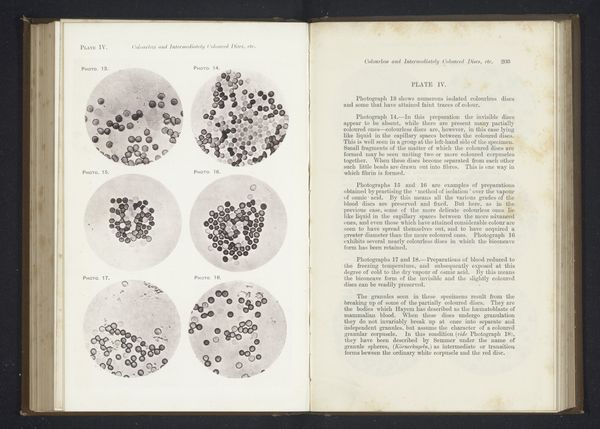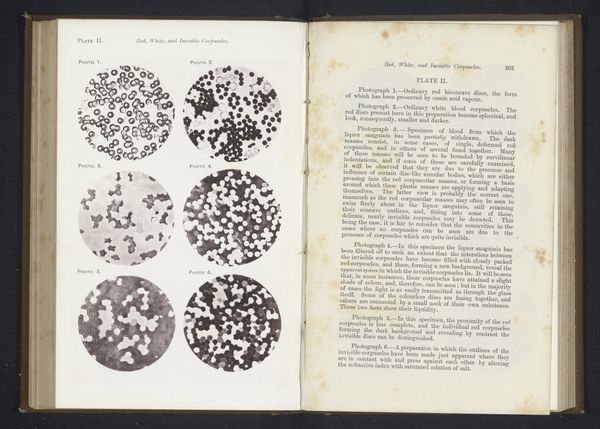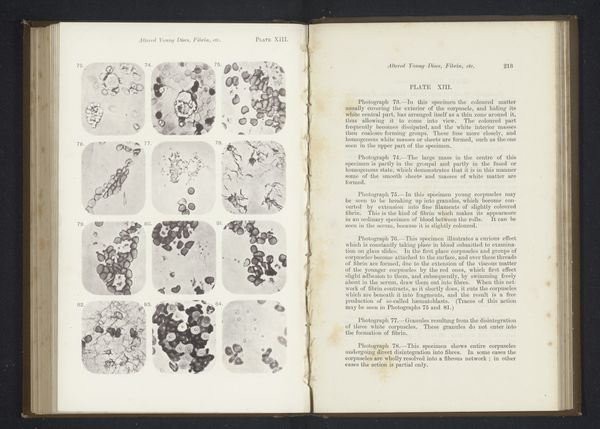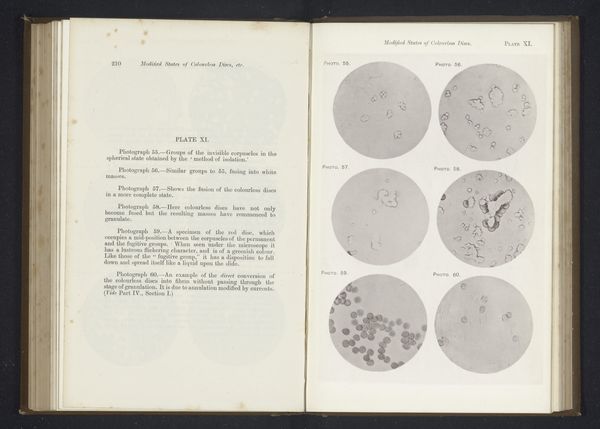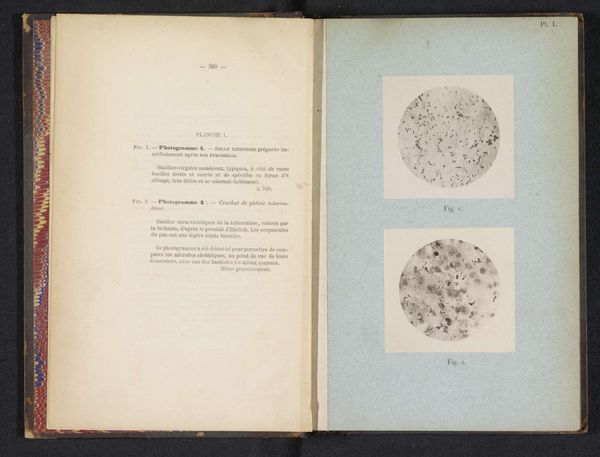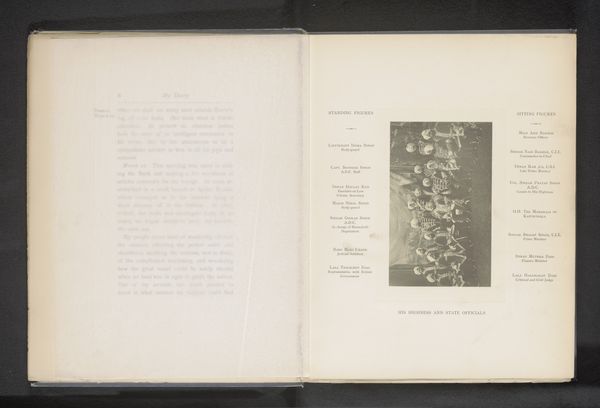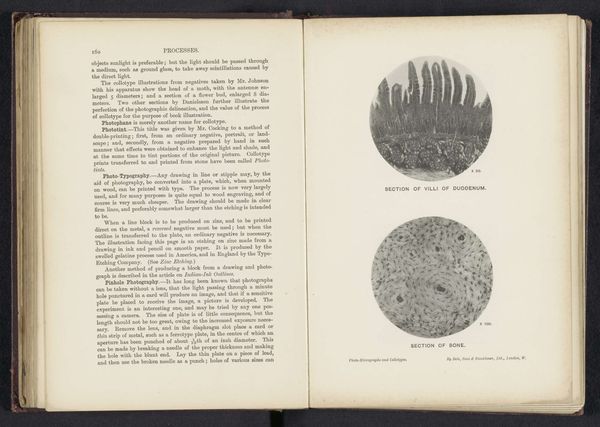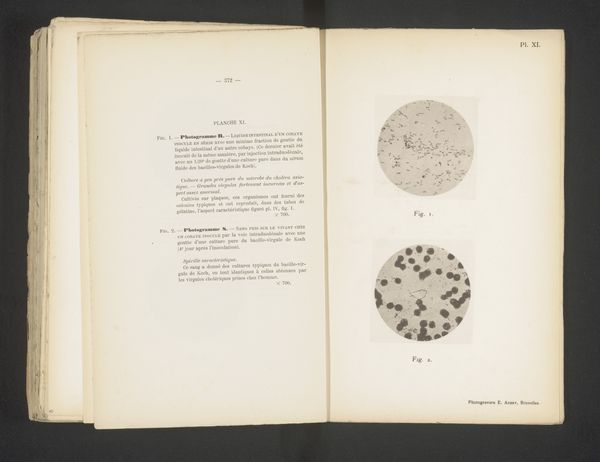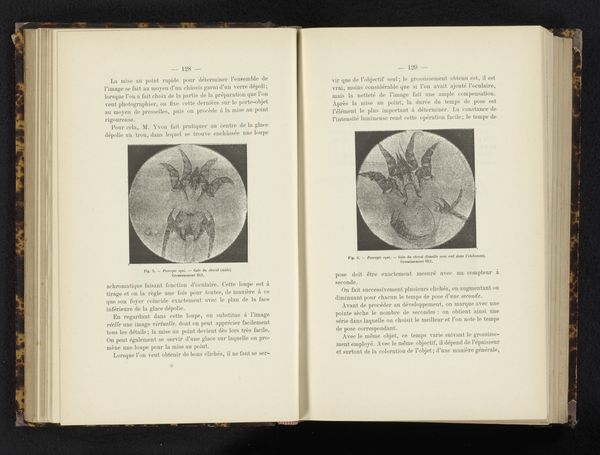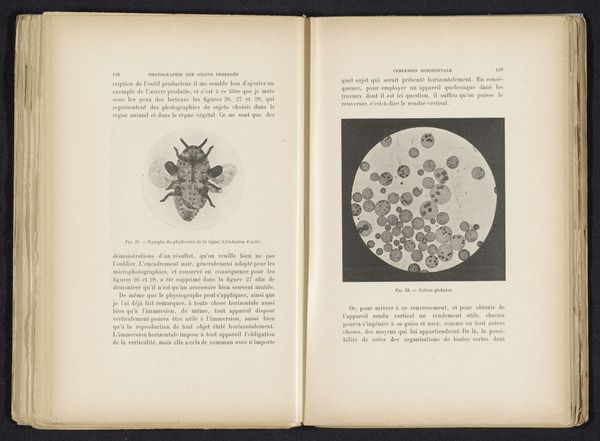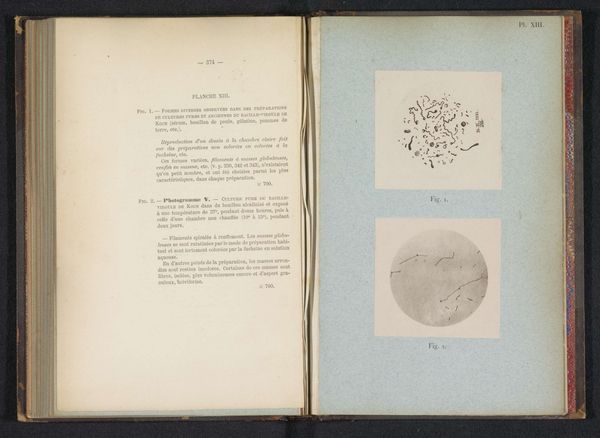
print, photography
#
still-life
#
script typeface
#
aged paper
# print
#
hand drawn type
#
photography
#
personal sketchbook
#
hand-drawn typeface
#
journal
#
thick font
#
handwritten font
#
golden font
#
academic-art
#
historical font
Dimensions: height 213 mm, width 135 mm
Copyright: Rijks Museum: Open Domain
Curator: Here we have an intriguing page from, as best as we can determine, before 1882. It’s titled “Twaalf vergrotingen van beenmerg,” or “Twelve Magnifications of Bone Marrow.” It appears to be a print, perhaps even a photograph transferred to the page, presenting a scientific observation. Editor: Gosh, my first impression is one of texture. Look at that aged paper! And all those tiny little cells clustered together like star constellations. There's something almost meditative about the repetition, and also a little creepy, I’ll admit. It reminds me of looking at something under a microscope in biology class, when all you wanted to see were planets and unicorns, but what you got was... this. Curator: Absolutely, and that’s part of what makes this image so compelling. These early scientific illustrations straddle the line between objective observation and artistic representation. They are visualizations driven by scientific inquiry but inevitably shaped by the aesthetic sensibilities and socio-political values of their time. The very act of magnifying and selecting certain specimens from bone marrow implies choices about what is considered significant or representative. Editor: True. And there’s the contrast between the almost sterile presentation of the microscopic imagery, compared to the soft, handmade lettering accompanying each cell magnification! It feels deeply human—someone meticulously recording data but also caring about how they present it. Like, ‘okay, bone marrow, let’s make it legible... and pretty, too.’ Curator: Precisely! The contrast you noted hints at a broader tension of the era between empirical science's burgeoning authority, and artistic legacy and craftsmanship. Each cell is presented as a discrete unit, cataloged, but taken as a whole, one has to wonder how these categories relate to emerging discourses about race, class, and perhaps even gender. I wonder how the magnified forms of biological material contributed to constructing specific ideas about bodies? Editor: Wow. So what seemed like just another image of bone marrow becomes charged with cultural and historical meaning... Okay, my brain is officially expanding. Looking at it again with your words in mind...I won’t ever see cellular images the same way. Thanks for giving me something new to mull over, Curator. Curator: And thank you, Editor, for those striking first impressions. It seems like scientific visuals aren't separate from the narratives around us, but rather deeply intertwined with culture, history, and of course the politics of power.
Comments
No comments
Be the first to comment and join the conversation on the ultimate creative platform.
